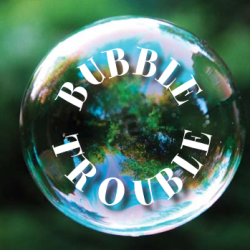Source Institutions
Source Institutions
Add to list Go to activity
Activity link broken? See if it's at the internet archive

In this activity on page 15 of the PDF, learners measure the amount of bubbles that they make using a detergent. Learners investigate whether adding Epsom salt to the solution affects its "sudsiness"--an important attribute of soap, since sudsy bubbles help soap clean greasy dirt. Use this activity to explore how chemicals can change a material's properties and how substances dissolve.
- Under 5 minutes
- 30 to 45 minutes
- $1 - $5 per student
- Ages 8 - 14
- Activity, Experiment/Lab Activity
- English, Spanish
Quick Guide
Materials List (per student)
- 3 disposable, clear plastic bottles with caps (20-ounce soda bottles work well; the bottles should be the same size and shape)
- Ruler
- Permanent marker
- Distilled water
- Food coloring (optional)
- Measuring spoons
- Liquid dishwashing detergent
- Epsom salt
- Clock or timer with second hand
Subjects
-
Engineering and Technology
-
Engineering
- Chemical Engineering
- Metallurgy and Materials Engineering
-
Engineering
-
Physical Sciences
-
Chemistry
- Chemical Bonding
- Chemical Reactions
- Solutions
-
States of Matter
- Solids
- Liquids
- Structure and Properties of Matter
-
Chemistry
-
The Nature of Science
-
The Scientific Process
- Conducting Investigations
- Gathering Data
- Formulating Explanations
- Communicating Results
-
The Scientific Process
Audience
To use this activity, learners need to:
- see
- read
- touch
Learning styles supported:
- Uses STEM to solve real-world problems
- Involves hands-on or lab activities
Other
Foreign language versions of this resource:
Access Rights:
- Free access
By:
- Department of Volunteer Support, American Chemical Society
Rights:
- All rights reserved, American Chemical Society, 2011
